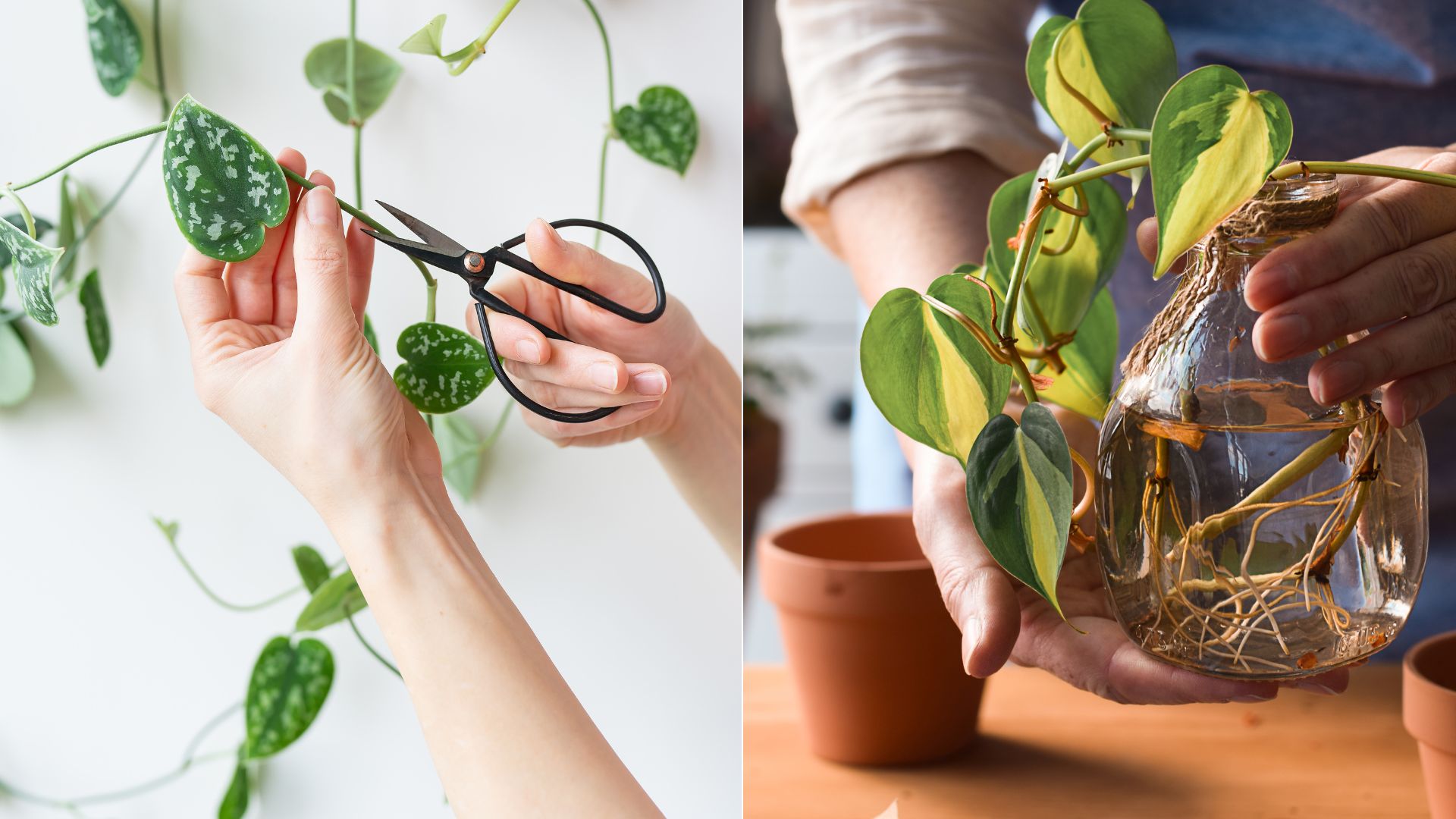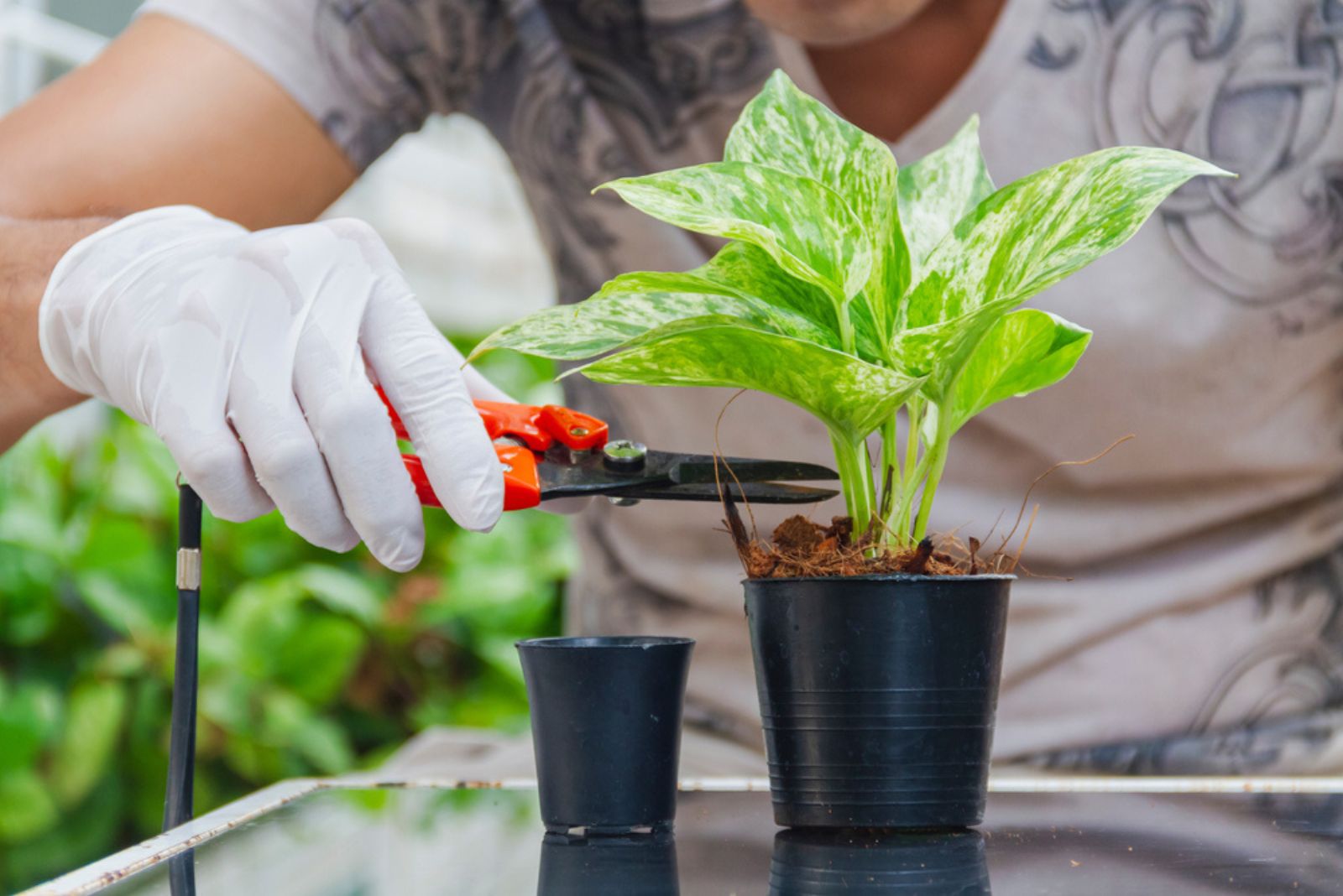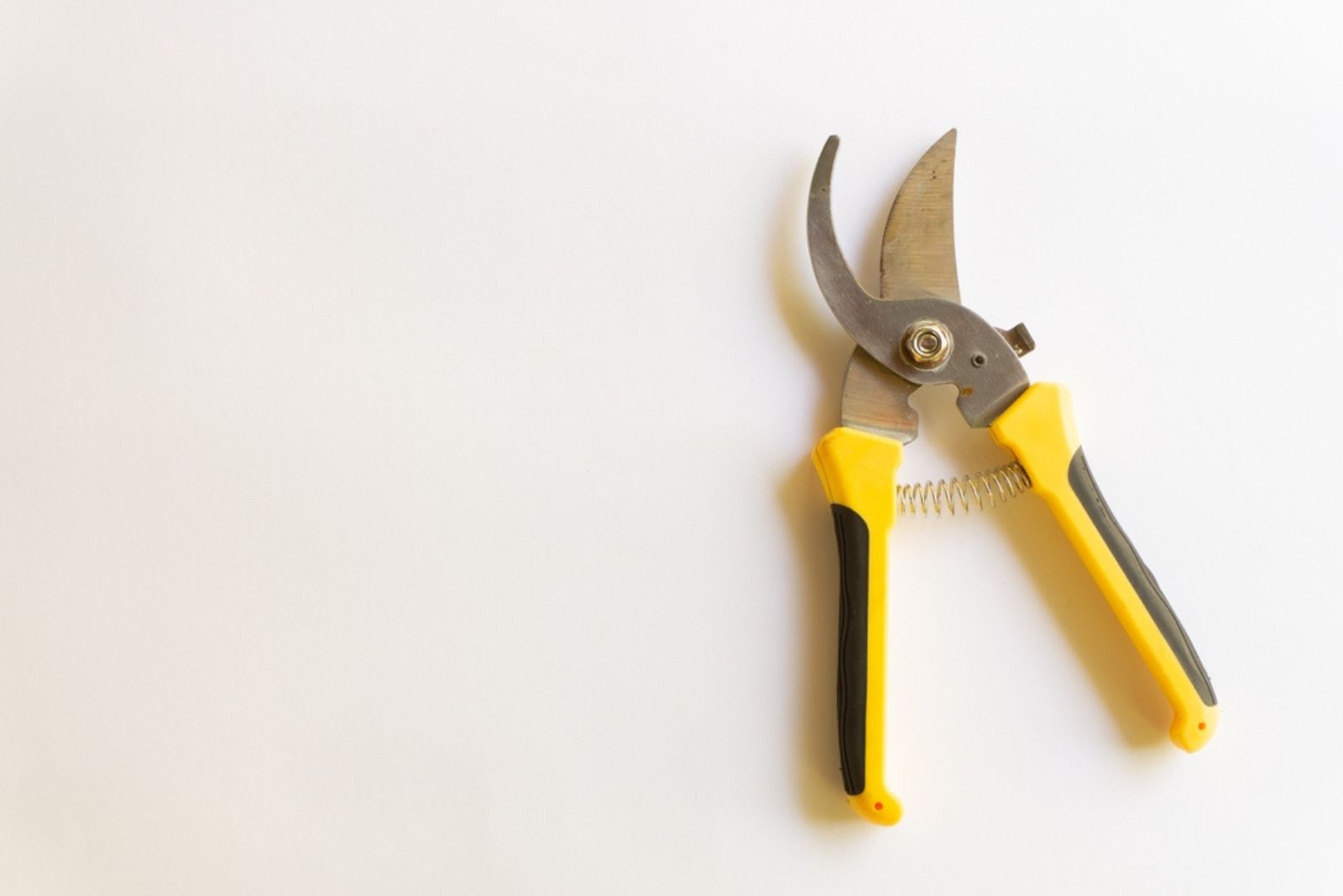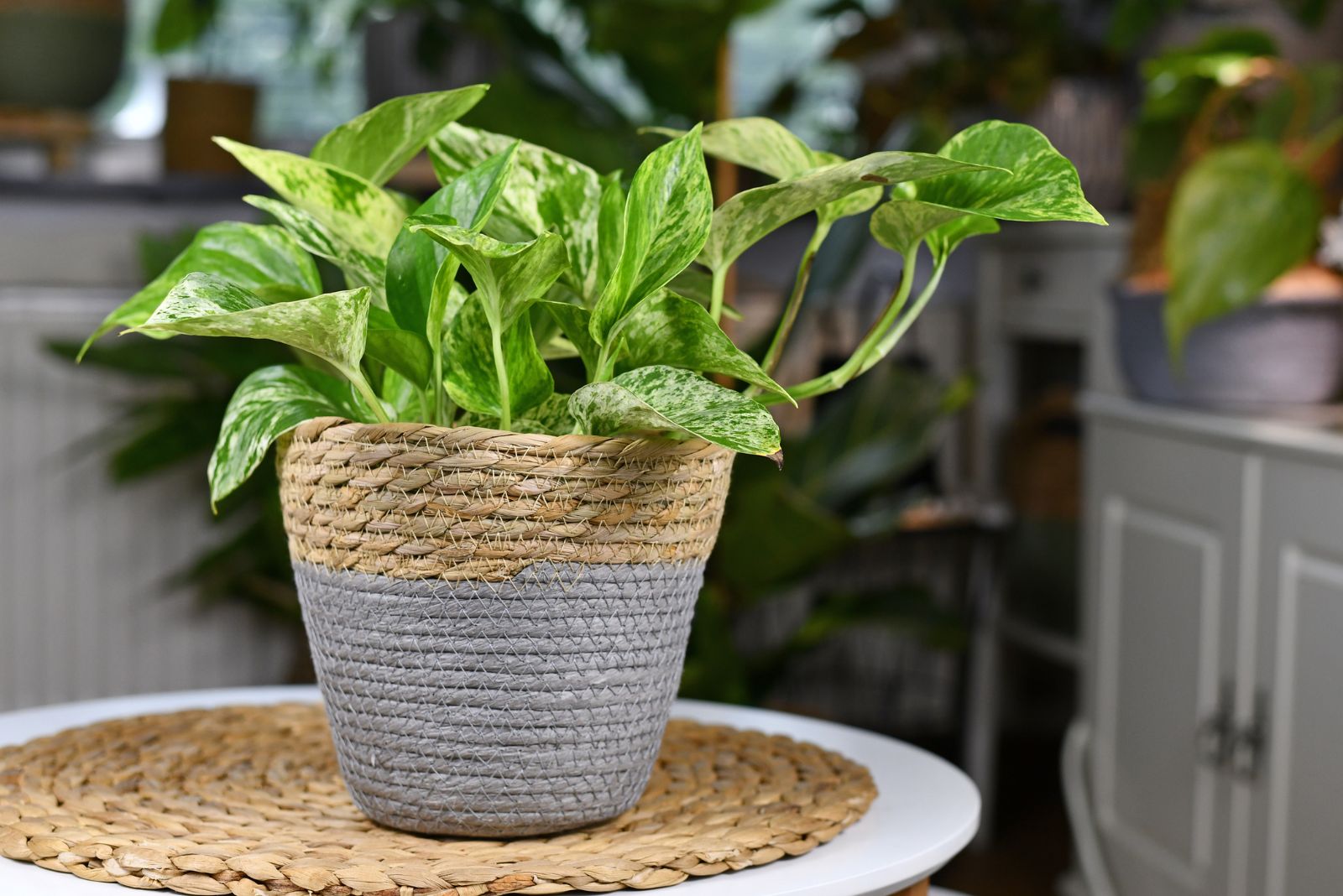Pothos plants adorn collections worldwide and are very popular among beginner growers. Their captivating appearance and low care requirements are the two main reasons why gardeners love them so much.
There are various pothos types and no matter which one you have, you should prune it to maintain its looks and boost health.
In this article, I’ll show you how to prune pothos and give you some top-notch maintenance advice. Additionally, you’ll find out what you can do with the cuttings left after pruning.
Let’s get started!
The Benefits Of Pruning Pothos Plants
The number one reason why you shouldn’t skip pruning your pothos plants is because it keeps them healthier and bushier.
In some cases, pruning can help you revive the plant if it loses a lot of foliage during the season.
You should know that some pothos types, especially non-variegated ones, have a fast growth rate and can grow pretty tall. Pruning may be your ally in keeping these plants from taking over your home.
Finally, those growers who keep their pothos in hanging baskets and have pets or small children should prune to control growth. As you may know, these plants are poisonous if ingested (1) so prune them so that tiny hands or paws can’t reach them.
When To Prune Pothos
These plants are hardier than most other common houseplants but this doesn’t mean you can prune them anytime.
You should prune pothos plants, no matter which species you have, when they’re growing actively. If you prune them too early, you may stress your plants and the results can be poor growth and damage.
The only exception to this rule is if you have some discolored, diseased, or dead leaves before the season.
When you prune during the growing season, your pothos will have enough energy to recover and display new growth faster.
The growing season for all pothos species typically starts in spring and continues through early fall. This basically means you have a lot of time to prune them so there’s really no need to rush.
Steps For Pruning Pothos Plants
Now that you know why and when to prune these plants, let’s see the most important part: how to do it!
1. Prepare Cutting Tools
When preparing the cutting tools, it’s not so much about which type to use. Shears, pruners, and scissors will all work well for pothos plants.
There are two things that are more important at this point. Remember that the tools you use should be sharp and that you should always sterilize them.
By using sharp tools, you avoid the potential breaking of your pothos plant. And when you clean your tools, you’ll avoid contamination, which is an essential part of this process.
I highly recommend wiping the blades of your cutting tools with a sterilizing solution before each cut.
2. Select The Cuttings To Prune
Now it’s time to make what I like to call a pruning plan. This involves deciding how much of the plant you want to prune.
If you just want to keep your pothos in shape, you can do a little trimming. This will encourage your pothos to grow faster and boost its health.
However, in some cases, you’ll need to prune more heavily. For instance, if there are any vines that don’t have leaves on them or have some diseased parts, you’ll need to prune them all. You can cut back your pothos to approximately 2 inches above the soil line.
No matter how much of your pothos you decide to prune, the procedure is the same.
3. Remove The Selected Sections
After you select a vine to prune, inspect it and find a part that’s about 1/4 inch above the leaf or node. The node is that lumpy part of the vine from which new leaves will form.
Do the same for each vine you want to remove. Sometimes, vines may not have any leaves attached so I highly recommend cutting them off.
The reason is simple: your goal is to restore the plant’s energy so that it can focus on new growth.
4. Remove All Damaged Leaves
If you’re lucky enough, you won’t have any diseased, discolored, or damaged leaves on your pothos. However, if there are some leaves that fall into this category, it would be best to remove them.
These leaves most likely won’t recover but will continue using the plant’s energy and nutrients. You must remove them to help your plant focus on producing new, healthy growth.
This step is especially important for infected leaves; the infection can quickly spread to all other pothos parts and put the plant in serious danger.
What To Do With The Cuttings
There’s one thing all gardeners should know: there’s no need to discard healthy cuttings. What you can (and should) do is propagate your pothos using these cuttings.
All you need to do is remove the lower leaf so that the node is completely visible. Then submerge the lower part of the cutting in a container filled with clean and fresh water.
If you have taken some larger cuttings from your pothos, you can divide them into a few sections. As long as they have a few leaves and nodes, they’ll root successfully.
The root formation typically does not take more than a couple of weeks. You can speed things up by adding a root hormone, but remember that the cuttings have a high rooting success rate even without this substance.
The spot where you keep the cuttings should be warm and receive a lot of bright but indirect light for the roots to form. When you notice the roots are about 3 inches long, you can plant the cuttings in a pothos soil mix.
With this simple yet effective method, your old pothos will grow better and you’ll have more plants for your friends, family, and, of course, to expand your own plant collection.
Will Your Pothos Grow Back After Pruning?
Many growers are afraid of pruning because they think their plants won’t regrow after they cut them. Don’t worry, your pothos won’t just regrow but it will also be happier and healthier.
However, the pruning process should be done as described above to avoid any potential problems. Cutting the vines above the nodes is the safest way to encourage new growth.
That’s it! You can train your trailing pothos to climb or let the vines cascade over the edges of your hanging baskets. Enjoy the view!
References
1. Pothos, Epipremmum aureum. (n.d.). Wisconsin Horticulture.




